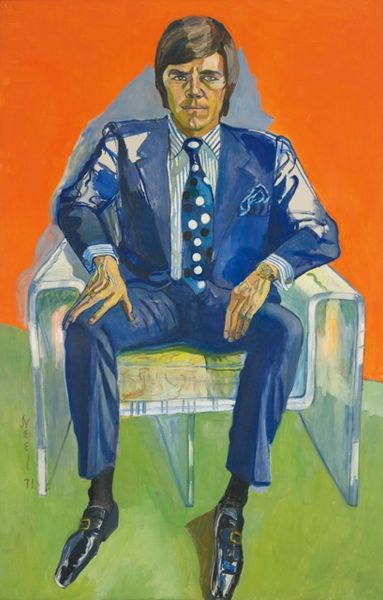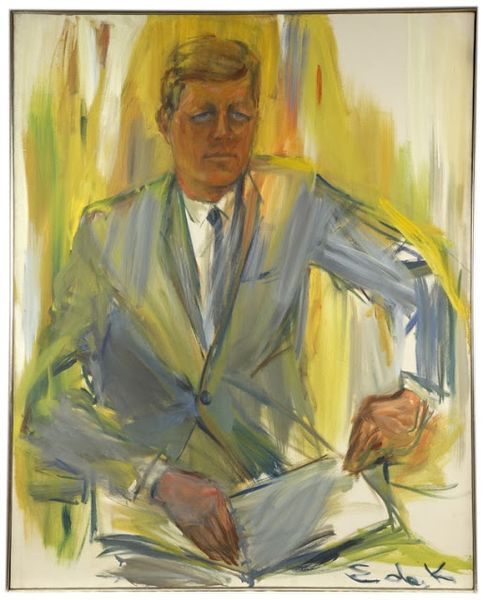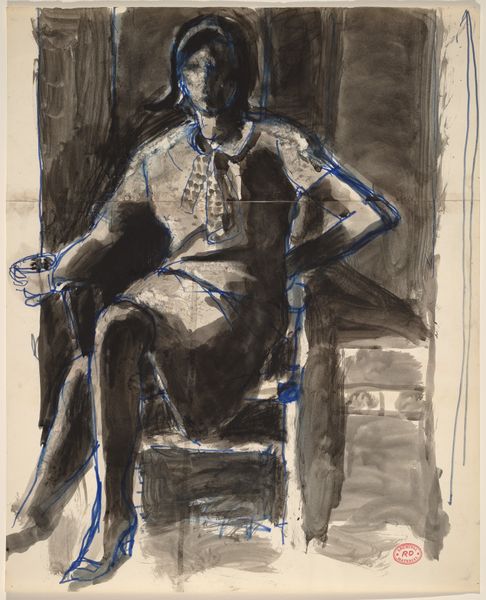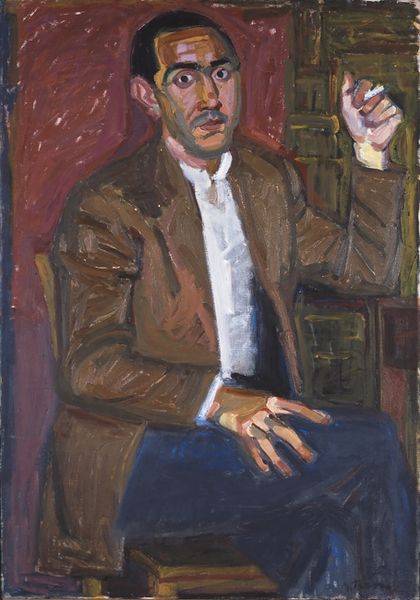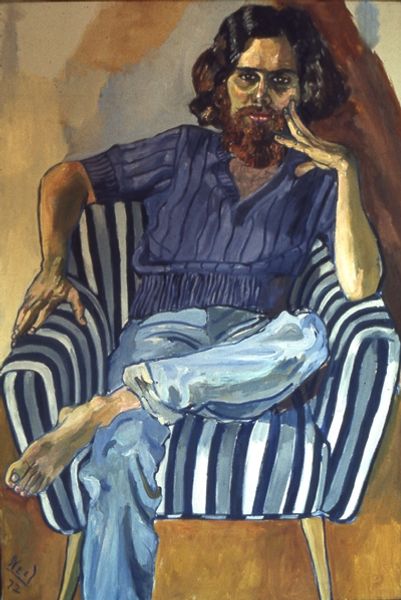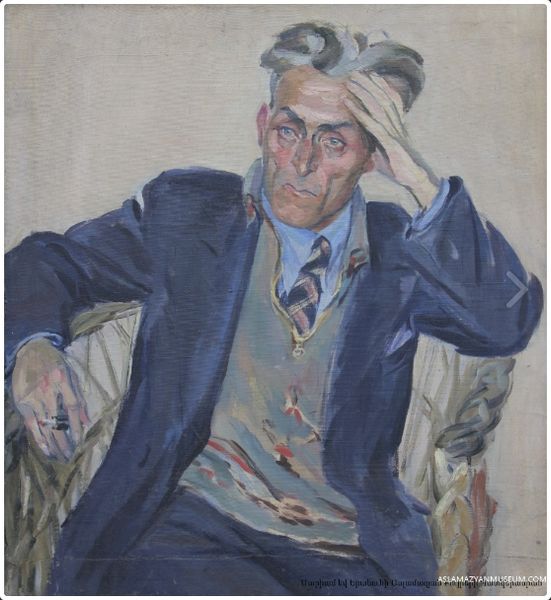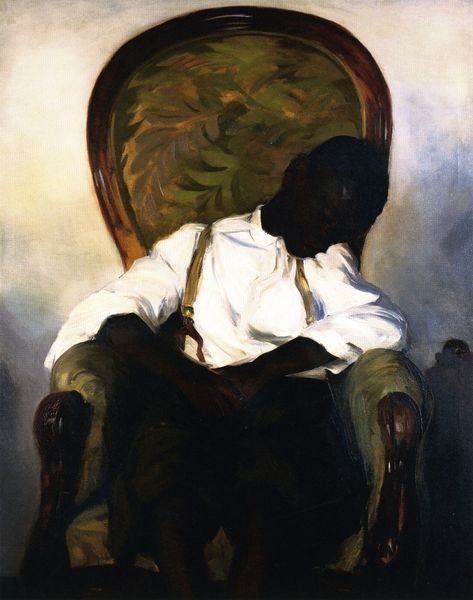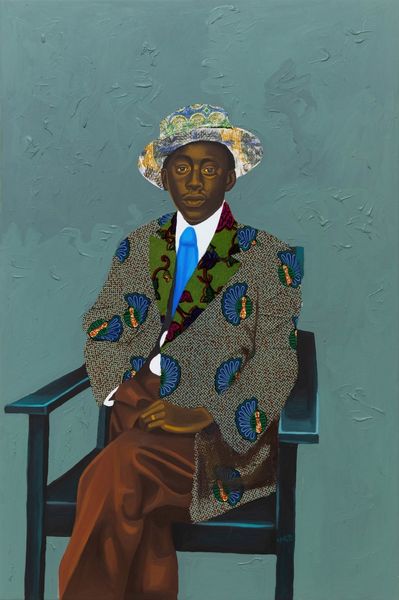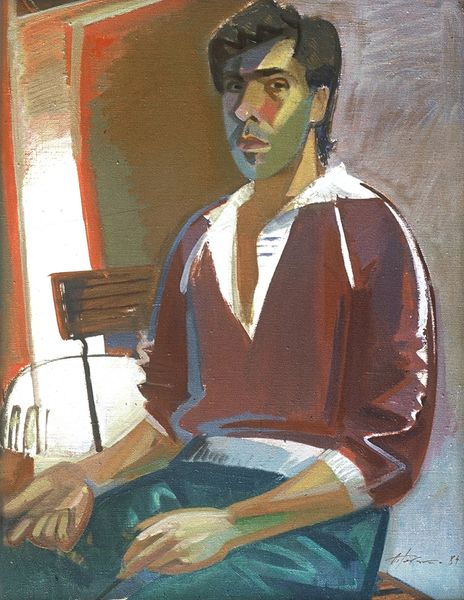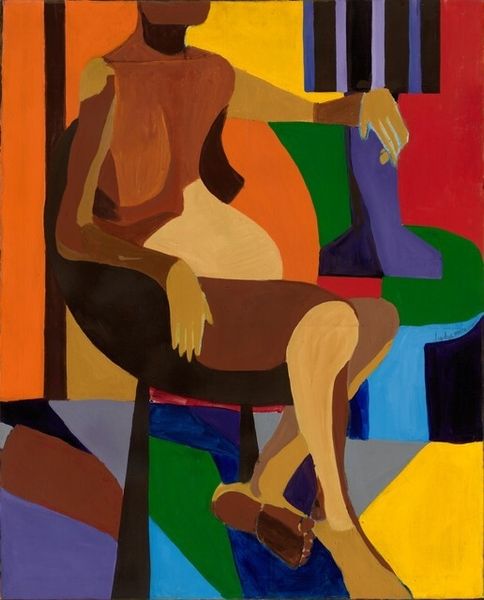
painting, oil-paint, impasto
#
portrait
#
painting
#
oil-paint
#
figuration
#
impasto
#
surrealism
#
portrait drawing
#
genre-painting
#
sitting
#
portrait art
#
modernism
#
fine art portrait
Copyright: Elaine de Kooning,Fair Use
Editor: So, this is Elaine de Kooning's "Fairfield Porter #1" from 1954, done in oil paint. It's quite striking, and I'm immediately drawn to how the face is obscured, almost erased. It lends a really unsettling feeling to an otherwise formal portrait. How do you interpret this work, particularly this absenting of the face? Curator: That facelessness is precisely where the symbolic power resides. The obscured face isn't merely an erasure, but a placeholder. It asks us to consider who Fairfield Porter was beyond the superficial details of his appearance. The stark tie might suggest conventionality, perhaps even constraint. But the sweeping, energetic brushstrokes…do you see how they destabilize that initial impression? Editor: I do. The looseness in the suit and the background definitely contrast the formality suggested by the tie. Curator: Precisely. Think about the flowers, too. They’re vibrant and alive, a splash of color offsetting the muted tones of his suit. Perhaps representing his creativity. Are they a counterpoint to his professional persona, or an integral part of it? Also consider de Kooning herself. What's the symbolic value of her rendering a portrait of a fellow artist? Editor: That's fascinating, a painter painting a painter. I hadn't considered that as its own layer of meaning. Curator: The power lies not in what is literally depicted, but in what is suggested, the absences and ambiguities. De Kooning gives us Porter's essence by obscuring his familiar image, asking us to consider cultural identity itself. It almost recalls those Roman busts where the head could be swapped for the family member, democratising the individual with types. Editor: I see that. The erasure becomes an opening. I never thought of it that way. Thank you.
Comments
No comments
Be the first to comment and join the conversation on the ultimate creative platform.


